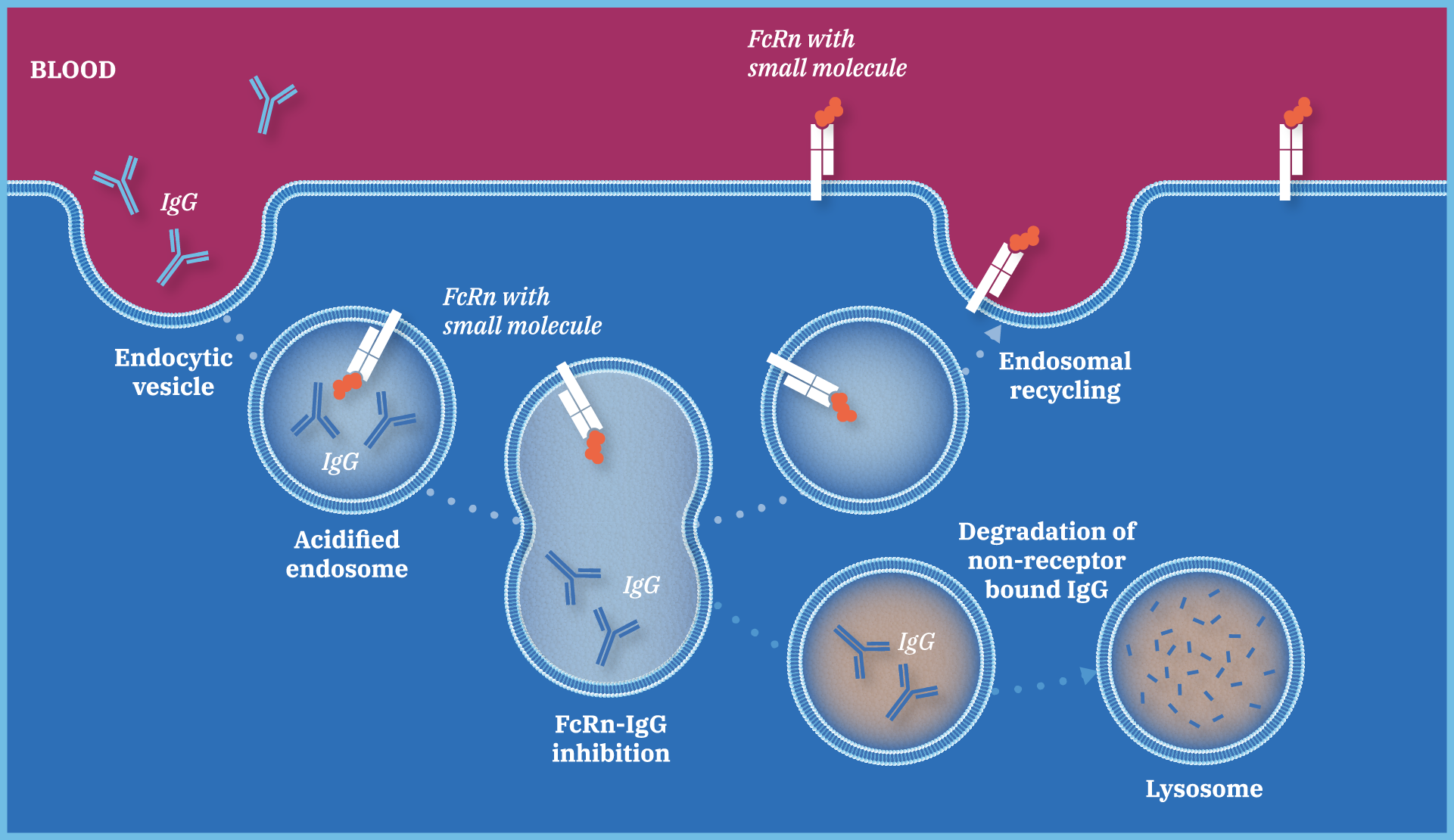
Pipeline and Targets
Building a pipeline backed by validated science and long-standing expertise in small molecule drug discovery

Our Pipeline
We strive to discover and develop small molecule therapeutics for diseases with high unmet need—specifically areas dominated by biologics. Our pipeline consists of proprietary drug candidates against clinically validated targets as well as programs focused on novel targets through our research collaboration agreement with Astellas.

Targets
FcRn is responsible for maintaining high levels of IgG in circulation. We have identified small molecule functional inhibitors of the FcRn protein. Inhibiting FcRn is a proven therapy for antibody-mediated autoimmune disease. We are currently evaluating these hits using more complex and sophisticated secondary and tertiary assays in order to select one or more for desired biologic properties and lead optimization.
